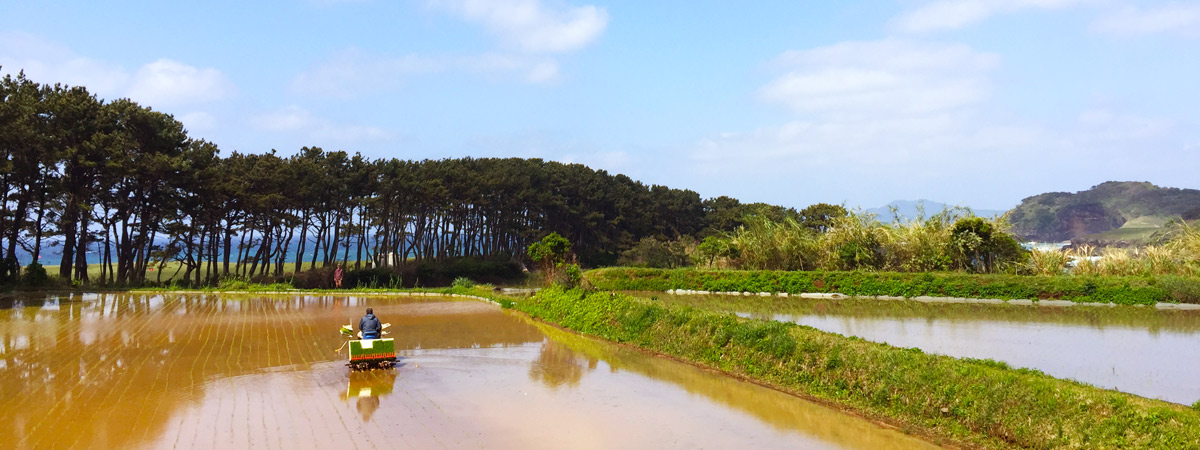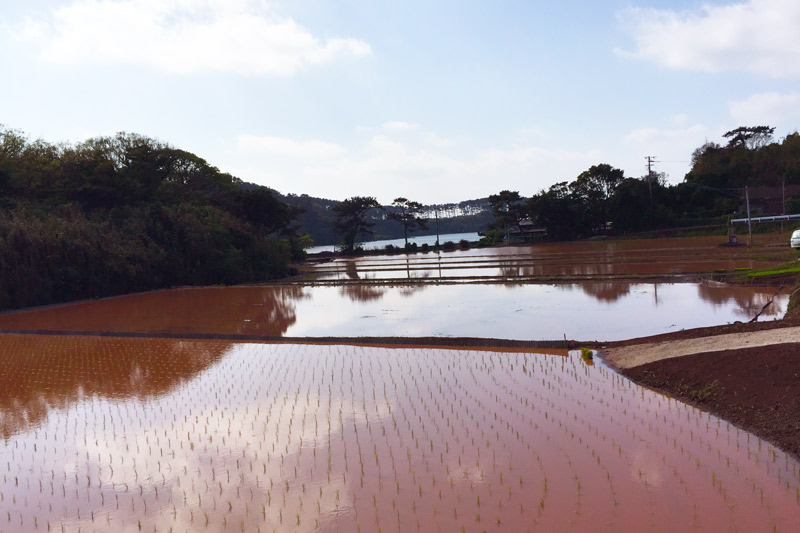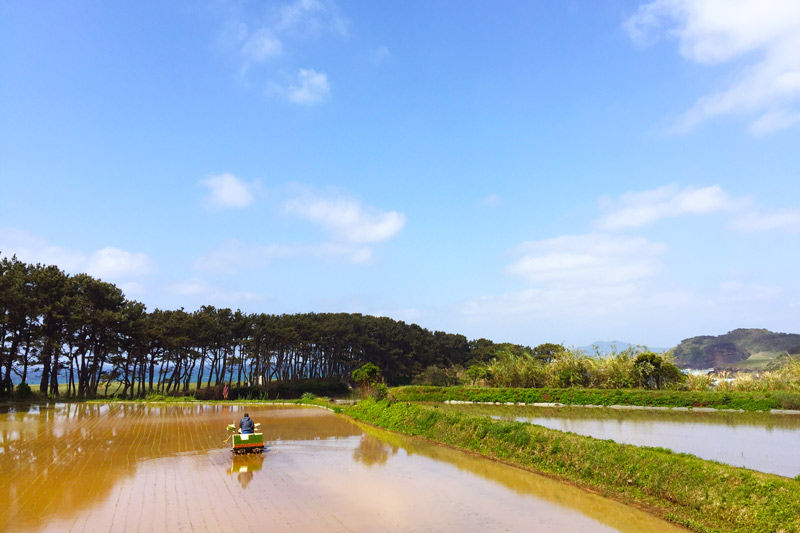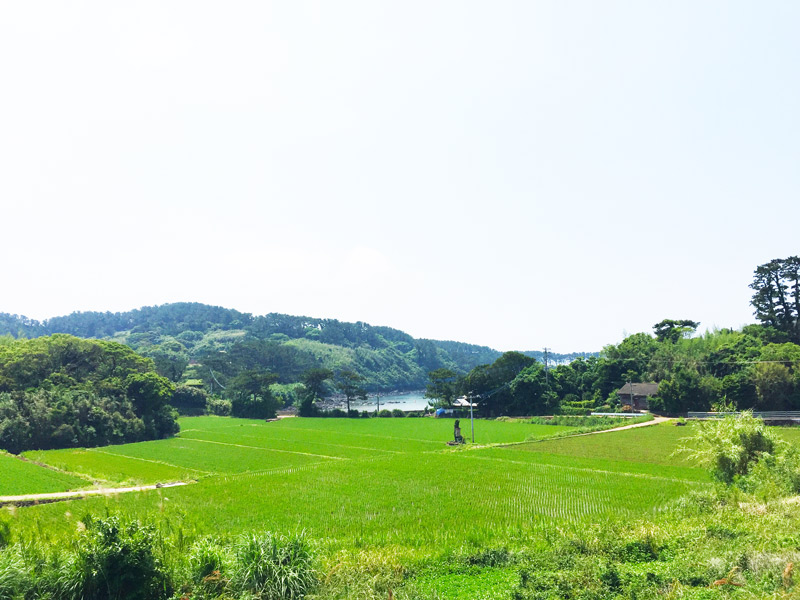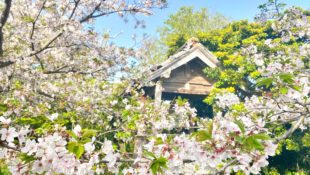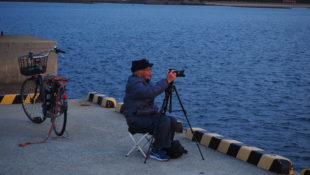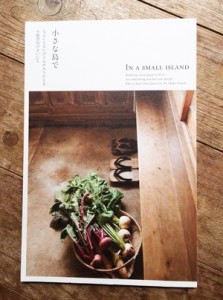With its flat terrain and red volcanic soil, Ojika Island is perfect for rice cultivation, and many locals own a rice paddy where they grow their own rice.
Because Ojika has an abundant amount of rain, most rice is grown through the process of wet cultivation.
On Ojika Island, rice planting begins in April.
The typhoon season arrives early to our small island, as such the rice cycle too starts earlier here.
One by one, farmers plant the rice stalks into the fields that have been fertilized and filled with water. Some farmers, those with smaller fields, do this by hand. Most of the farmers, however, use the rice-planting machine.
One stalk produces about one bowl of rice.
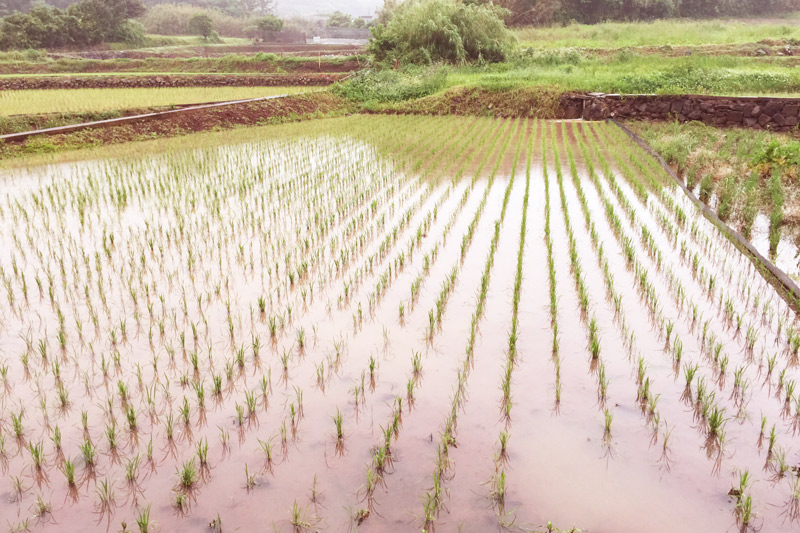
The farmers’ job doesn’t end with planting, however.
Each day, morning and night, they visit their fields to check and adjust the water level as well as to fight the pests.
The Rice Paddy Crab is the sworn enemy of local farmers. Not only do they eat young rice, the holes they make in the ground let the water seep through, drying up the fields.
The rice cycle on Ojika Island is filled with cumulative effort, and Ojika’s farmers sure do put their hearts into every single day of it.
